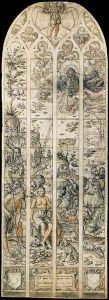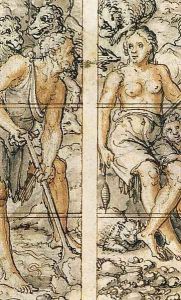Dirck Pietersz. Crabeth Paintings
Dirck Pietersz. Crabeth was a Dutch Renaissance glass painter, born between 1500 and 1510 in Gouda, in what is now the Netherlands. He is often considered one of the most important stained glass artists of his time, and he played a significant role in the development of stained glass art during the 16th century. His exact birth date is uncertain, but his work and influence in the art world have been well documented.
Crabeth came from an artistic family; his brother Wouter Pietersz. Crabeth was also a painter. Together, they were primarily responsible for the stained glass windows of the Sint Janskerk in Gouda, which are recognized as some of the most beautiful and significant works of the Northern Renaissance.
Dirck's contribution to the Sint Janskerk includes a series of windows that were commissioned by various wealthy patrons and organizations, including the Dutch monarchy and local guilds. His work is characterized by its intricate detail, vibrant colors, and the skillful depiction of figures and narratives from the Bible and contemporary events.
Aside from his work in Gouda, Dirck Pietersz. Crabeth's stained glass designs were also influential in other European regions. His style spread through the work of his apprentices and through designs that were distributed to other artists. The influence of his work can be seen in the spread of Renaissance styles across Northern Europe.
Crabeth's significance in art history also comes from his role in the transition from Gothic to Renaissance art styles in the Netherlands. His work reflects the changing artistic tastes of the period, incorporating Renaissance ideals of humanism, perspective, and proportion into the traditionally Gothic medium of stained glass.
Dirck Pietersz. Crabeth passed away in 1574, but his legacy lived on through his contributions to the art of stained glass and the influence he had on other artists of his time and thereafter. The windows of the Sint Janskerk in Gouda remain a testament to his skill and are still admired today for their artistic and historical significance.

